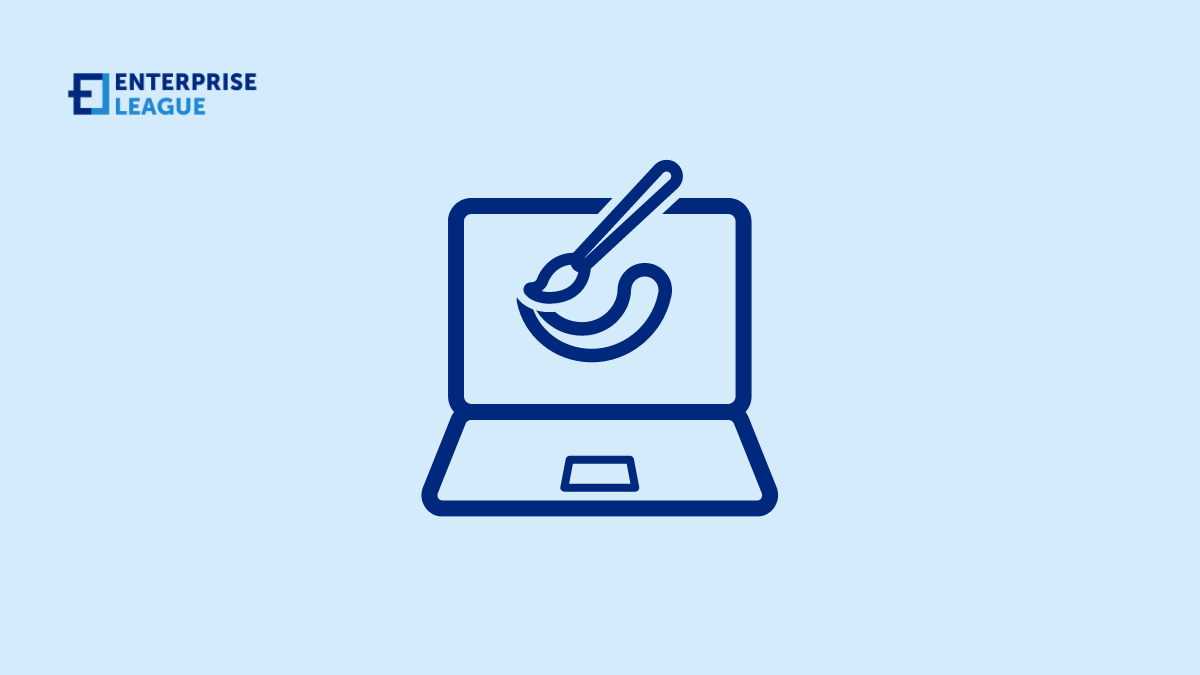Creating a logo is one of the most important steps in building a successful brand. It’s not just about choosing colors and shapes; your logo needs to convey the essence of your brand’s identity. A well-designed logo helps customers instantly recognize and connect with your business. But how do you create a logo that truly reflects your brand’s core values and personality? In this guide, we’ll walk you through the essential steps to design a logo that effectively communicates who you are.
This article has been prepared by the specialists at TurboLogo, a company that knows exactly how to help businesses create memorable logos that resonate with their target audiences. With years of experience in logo creation and branding, TurboLogo’s experts are here to guide you through the process of designing a logo that will leave a lasting impression.
Why your logo matters for brand identity
Your logo is more than just a visual mark – it’s a reflection of your brand’s identity. When someone sees your logo, they should instantly understand the values, emotions, and message your brand stands for. A strong logo creates a sense of familiarity and trust, helping to form an emotional connection with your audience.
Think of major brands like Apple or Nike. Their logos are simple, yet they instantly bring to mind everything their brand represents – innovation, quality, and customer trust. Your logo has the power to shape how people perceive your business, so it’s essential to invest time and effort into getting it right.
Understand your brand’s core values
Before jumping into the visual aspects, it’s crucial to have a clear grasp of your brand’s essence. Consider what principles are at the heart of your brand. Is your company focused on innovation and cutting-edge ideas? Or does your brand pride itself on its heritage and dependability? Pinpointing these fundamental characteristics will guide you toward design choices that truly reflect your brand’s unique personality.
For example, if your brand is about innovation and technology, you might opt for sleek, minimalist design elements. If your brand focuses on luxury, you may want to use sophisticated fonts and a refined color palette. Your logo should reflect your brand’s unique values and vision to make a meaningful impact.
Know your audience and their expectations
Prior to delving into aesthetics, it’s essential to thoroughly understand your brand’s core identity. Reflect on the values that define your company. Are you driven by groundbreaking advancements and forward-thinking concepts? Or do you emphasize your established history and trustworthiness? Identifying these key attributes will steer you toward design decisions that authentically capture your brand’s distinct character.
For example, if your brand is about innovation and technology, you might opt for sleek, minimalist design elements. If your brand focuses on luxury, you may want to use sophisticated fonts and a refined color palette. Your logo should reflect your brand’s unique values and vision to make a meaningful impact.
Choose the right design style
Now that you understand your brand’s values and audience, it’s time to think about the overall style of your logo. Do you want something minimalist, with clean lines and simple shapes? Or are you leaning toward a more vintage look, which can convey a sense of heritage and authenticity? Your design style will communicate a lot about your brand.
Some of the most common logo styles include:
- Minimalist: Clean and straightforward, often using geometric shapes.
- Classic: Timeless designs that feel trustworthy and reliable.
- Playful: Fun, bright, and often informal logos that appeal to younger audiences.
- Modern: Innovative and sleek, with bold fonts and shapes.
It’s important to choose a design style that fits your brand’s personality and will remain relevant as your business grows.
How online logo makers help you create a logo with ease
Online logo makers provide a simple and effective way to create a logo without the need for advanced design skills. These platforms offer a wide range of templates, fonts, colors, and icons, allowing you to customize your design to perfectly match your brand’s identity. With user-friendly interfaces, anyone can quickly experiment with different styles and layouts, making it easier to bring your vision to life.
Many logo makers also provide additional features like high-resolution downloads and branding packages, ensuring that your logo looks professional across all mediums. Whether you’re just starting out or rebranding an online logo maker is a great tool to streamline the design process.
Find the perfect color palette
While creating a logo, keep in mind that color stands out as a potent element. Each hue carries its own emotional resonance and connotations, necessitating a thoughtful selection of tones that harmonize with your brand’s core message. Consider how blue often conjures feelings of reliability and expertise, making it a go-to choice for technology firms and financial enterprises. In contrast, red tends to communicate dynamism and fervor, which is why it’s frequently employed by brands aiming to capture attention and convey a daring persona.
It’s wise to avoid overcomplicating your color choices. Generally, limiting your palette to two or three hues yields the best results. A judiciously chosen color scheme enhances your logo’s adaptability and memorability across diverse platforms, from compact business cards to expansive outdoor advertisements.
Pick fonts that speak for your brand
The font you use in your logo says a lot about your brand. Typography is a powerful design element, and choosing the right font can significantly influence how your brand is perceived. Are you looking for something modern and cutting-edge? A bold, sans-serif font might be the right choice. If your brand is more traditional, a serif font could give your logo a timeless feel.
You should also consider legibility. Your font needs to be easily readable across different formats and sizes. Simple and clean fonts tend to work best, especially when your logo will appear on various digital and print materials.
Incorporate symbols and icons thoughtfully
The typeface selected for your logo communicates volumes about your brand’s character. As a potent design component, typography can dramatically shape public perception of your company. Are you aiming to project a contemporary, innovative image? A striking sans-serif font might align well with this goal. For brands emphasizing heritage and longevity, a serif typeface could lend your logo an enduring quality.
Readability is another crucial factor to weigh in your decision. Your chosen font should maintain clarity across various mediums and dimensions. Generally, uncomplicated and crisp typefaces prove most effective, particularly when your logo will feature on a wide array of digital platforms and printed materials.
Keep it simple and memorable
In logo design, less often achieves more. An overly complex logo risks bewildering your audience and hampering brand recognition. Many of the world’s most iconic logos are remarkably straightforward – consider Nike’s distinctive curve or McDonald’s twin arches. A minimalist logo tends to be more memorable and adapts well to various applications.
Your aim should be to craft a logo that’s instantly identifiable, even with just a quick look. Steer clear of incorporating numerous components or intricate details that may become indistinguishable when your logo is reduced in size for use on small items like business cards or website headers. By embracing simplicity in your design, you’ll create a logo with greater flexibility and broader applicability.
Test your logo across different mediums
After finalizing your logo design, the next crucial step is to evaluate its versatility. Your logo should maintain its visual appeal across all platforms, from your digital presence on websites and social media to tangible materials like business cards and physical merchandise. It’s essential to verify its effectiveness at various scales and in different formats. A design that impresses on an expansive display might lose its impact when reproduced on more compact surfaces.
Examine your logo’s performance in full color as well as monochrome to ensure it retains its visual strength in any context. The ultimate objective is to develop a logo that consistently communicates your brand’s essence, regardless of its application or presentation method.
Conclusion
Keep in mind that your logo serves as the visual foundation of your brand identity. It ought to be uncomplicated, easily recalled, and adaptable enough to remain relevant over time. Through careful design considerations and meticulous attention to specifics, your logo can evolve into a potent instrument for cultivating brand awareness and fostering customer allegiance.
More must-read stories from Enterprise League:
- Get entertained and educated with some of the best business movies.
- Why hiring millennials might be the best decision you can ever make.
- The importance of customer-focused strategy for your business.
- Find out how to turn your hobby into a business.
- Tactics for using TikTok marketing for your small business successfully.
Related Articles
Workplace Violence or Drug Accusations: Protecting Yourself Legally
Accusations of workplace violence or drug-related misconduct can derail a career, even when the claims are unfounded. A single allegation can lead to suspension, internal investigations, damaged professional relationships, and in serious cases, criminal charges....
Workers’ Compensation Costs for Factory and Warehouse Forklift Accidents
Forklifts play a central role in day-to-day operations across factories and warehouses, but they also create a significant risk of injury. When a forklift overturns, strikes a pedestrian, or drops a load, the financial impact reaches far beyond the immediate medical...
Delayed Construction Injury Reports: Impact on Workers’ Comp
Construction work carries unavoidable risks, which is why workers' compensation exists to protect employees after an injury. But one factor can alter the entire outcome of a claim: delayed reporting. In the construction industry, where injuries often occur in...
Workplace Violence or Drug Accusations: Protecting Yourself Legally
Accusations of workplace violence or drug-related misconduct can derail a career, even when the claims are unfounded. A single allegation can lead to suspension, internal investigations, damaged professional relationships, and in serious cases, criminal charges....
Workers’ Compensation Costs for Factory and Warehouse Forklift Accidents
Forklifts play a central role in day-to-day operations across factories and warehouses, but they also create a significant risk of injury. When a forklift overturns, strikes a pedestrian, or drops a load, the financial impact reaches far beyond the immediate medical...






